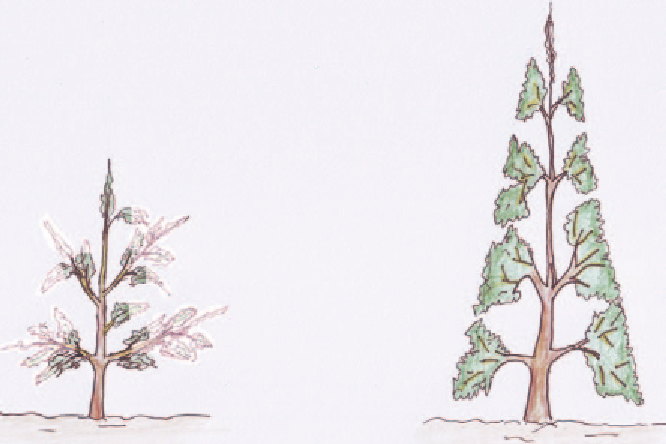Agriculture Reference
In-Depth Information
Figure 4.61
Conifers should never have their central leader cut back until the plant has reached the desired height.
Prune back only the side growths.
growing species can be pruned harder than
the slow.
the hedge should 'read' as a single entity,
presenting an unbroken and continuous
surface. As always, the first consideration is
plant selection, what is suitable for your site
and what size you want your hedge to be.
In the second year prune back the new
growth by about a half at the end of the
dormant season to initiate even more twiggy
growth before the hedge has its first clip in
mid to late spring (see Figure 4.61).
The most formal of hedges are made up
from species capable of twiggy growth on
the ends of their branches with very small
leaves. Large-leaved species tend to look
ravaged after trimming, presenting so many
cut leaves that need to heal; small leaves can
hide their pain. Formal hedging plants are
often unprepossessing as individuals, but
acting as a group these horticultural
dullards can pack a heavy landscape punch
(see Table 4.16, page 95). When selecting
your plant material, keep in mind how easy it
will be to renovate in the future. Those
species that can produce new growth from
leaf less wood are the simplest to manage.
How often it needs clipping will depend on
what sort of hedge you have planted and what
degree of formality you require. Usually once
or twice a year will suffice, with the exception
of extremely fast-growing species.
Lonicera
nidita
or Oz box needs maintenance up to five
times a year
to maintain a formal finish
.
Formalhedges
The elegance of formal hedging is
undeniable. Although made up of individuals,

